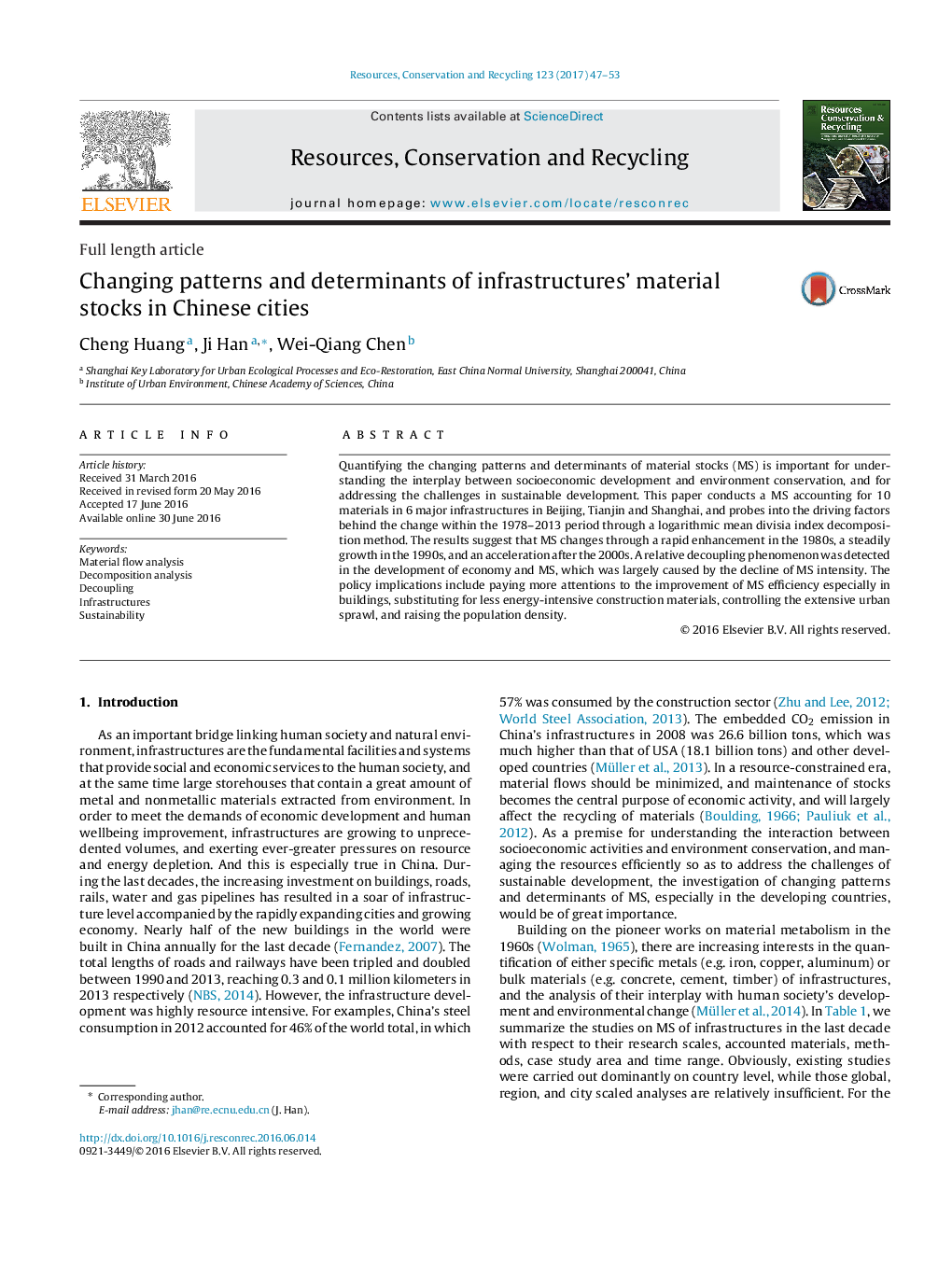| Article ID | Journal | Published Year | Pages | File Type |
|---|---|---|---|---|
| 5118819 | Resources, Conservation and Recycling | 2017 | 7 Pages |
â¢Changing patterns and determinants of material stocks in three Chinese cities are investigated.â¢A comprehensive and up-to-date material stock inventory is provided.â¢A relative decoupling of the economic development from material stock addition is found.â¢Economic and population boom are the major factors driving the unprecedented rise of material stock.â¢Making cities compact rather than dispersed would be effective to reduce the material stock intensity.
Quantifying the changing patterns and determinants of material stocks (MS) is important for understanding the interplay between socioeconomic development and environment conservation, and for addressing the challenges in sustainable development. This paper conducts a MS accounting for 10 materials in 6 major infrastructures in Beijing, Tianjin and Shanghai, and probes into the driving factors behind the change within the 1978-2013 period through a logarithmic mean divisia index decomposition method. The results suggest that MS changes through a rapid enhancement in the 1980s, a steadily growth in the 1990s, and an acceleration after the 2000s. A relative decoupling phenomenon was detected in the development of economy and MS, which was largely caused by the decline of MS intensity. The policy implications include paying more attentions to the improvement of MS efficiency especially in buildings, substituting for less energy-intensive construction materials, controlling the extensive urban sprawl, and raising the population density.
